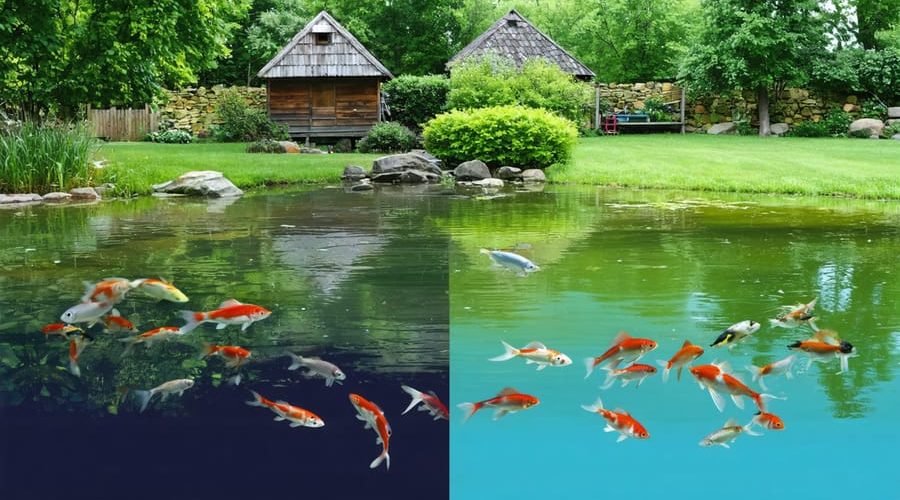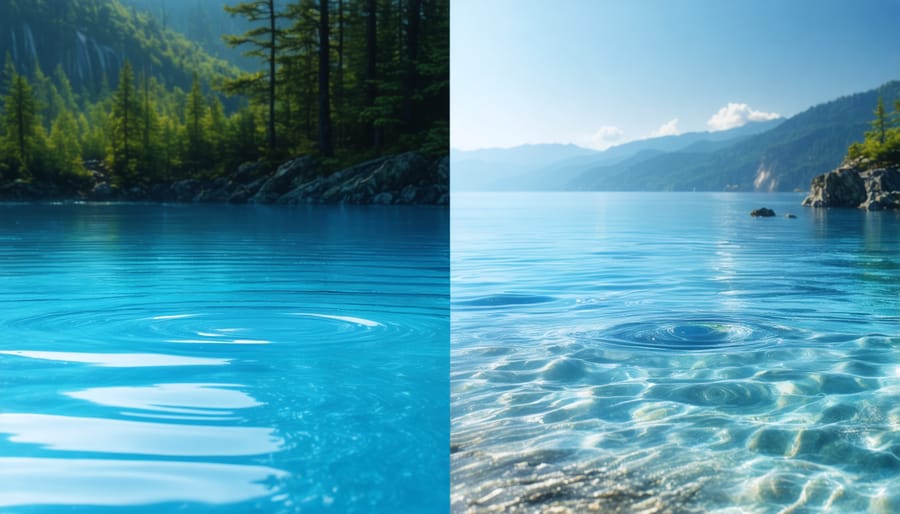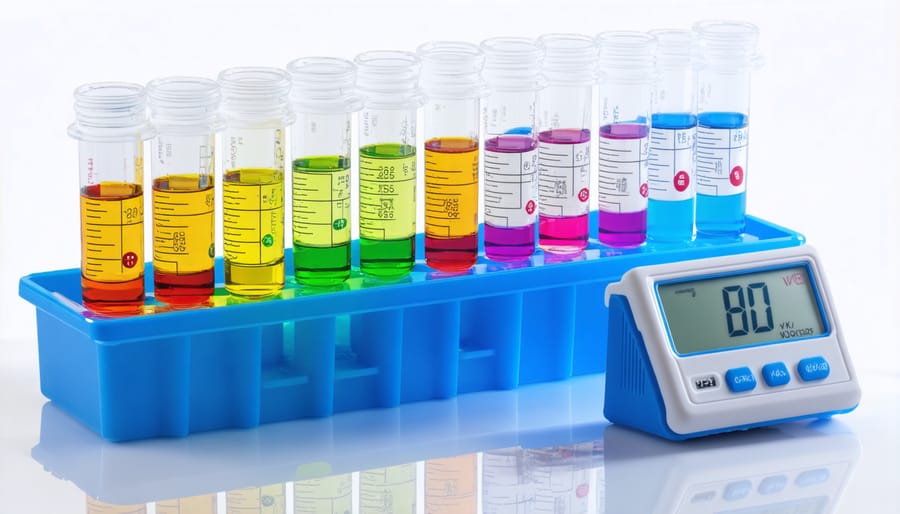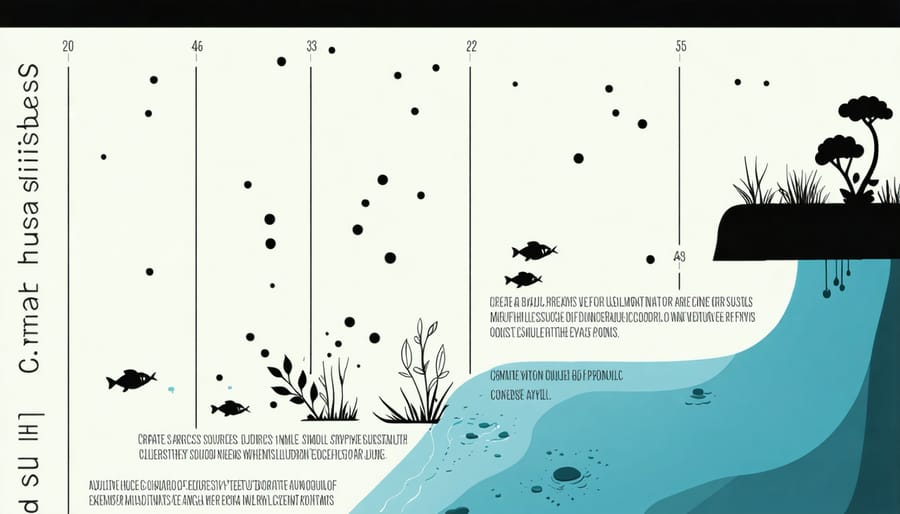
Ocean Water Is Poisoning Your Pond Fish (Here’s What You Need to Know)
Ocean water contamination threatens not just marine ecosystems but also our backyard water gardens and ponds. Every year, millions of gallons of polluted runoff, chemical waste, and microplastics seep into our waterways, creating a ripple effect that impacts even the smallest aquatic environments. For pond owners and water garden enthusiasts, understanding these contamination risks is crucial for maintaining healthy aquatic ecosystems.
Recent studies show that even isolated water features can be affected by airborne pollutants and contaminated rain, making water quality management a top priority for any water gardener. The effects can be subtle at first – slightly cloudy water, stressed fish, or declining plant health – but can quickly escalate into serious problems that threaten entire pond ecosystems.
Fortunately, with proper monitoring and maintenance, we can protect our water gardens from these environmental challenges. By understanding the sources of contamination and implementing preventive measures, pond owners can create and maintain thriving aquatic environments that resist the effects of water pollution.
Common Ocean Water Contaminants That Threaten Pond Life

Chemical Pollutants and Heavy Metals
Industrial pollutants and heavy metals pose serious threats to our ocean ecosystems, affecting both plant and animal life. Common contaminants include mercury, lead, copper, and zinc, which often enter waterways through factory discharge, mining operations, and urban runoff. These harmful substances don’t just disappear – they accumulate in the tissues of fish and other marine creatures, creating a dangerous ripple effect throughout the food chain.
When fish absorb these toxins, they can experience reduced growth rates, reproductive problems, and weakened immune systems. Some species become more susceptible to diseases, while others may develop mutations that affect their offspring. Marine plants aren’t spared either – heavy metals can stunt their growth and interfere with photosynthesis, leading to decreased oxygen production in our oceans.
What’s particularly concerning is how these pollutants can travel far from their source. Through ocean currents, contaminated water can affect ecosystems thousands of miles away. Even more troubling is the way these toxins can concentrate in predatory fish, making them potentially dangerous for human consumption. This process, known as bioaccumulation, means that larger fish often contain higher levels of these harmful substances than smaller ones.
Biological Contaminants
Ocean water contains various biological contaminants that can pose risks to both marine life and human health. These microscopic troublemakers include harmful bacteria like E. coli and Enterococci, which often enter the water through sewage spills or storm runoff. Parasites such as Cryptosporidium and Giardia are particularly concerning because they can survive in water for extended periods and cause serious intestinal illnesses.
Viruses, including hepatitis and norovirus, are another significant biological threat found in contaminated ocean waters. These pathogens typically enter the marine environment through human waste and can cause various health issues ranging from mild stomach upset to severe infections.
Harmful algal blooms (HABs), also known as red tides, represent a natural but dangerous form of biological contamination. These microscopic algae can produce powerful toxins that harm marine life and affect humans through direct contact or consumption of contaminated seafood.
Regular water quality monitoring and public health advisories help protect beachgoers and coastal communities from these biological hazards. Following local beach closures and swimming advisories is crucial for staying safe and healthy while enjoying ocean activities.

Testing Your Water Source for Safety
Essential Water Parameters to Check
Regular monitoring of essential water tests is crucial for maintaining a healthy aquatic environment. The key parameters you should check include pH levels, which should ideally stay between 6.5 and 8.5. Dissolved oxygen (DO) levels need to remain above 5 mg/L to support aquatic life, while ammonia levels should stay below 0.02 ppm to prevent toxicity.
Temperature is another vital factor, with most pond life thriving between 65-75°F (18-24°C). Keep an eye on nitrate and nitrite levels too – nitrates should stay under 50 ppm, while nitrites shouldn’t exceed 0.1 ppm. Phosphate levels above 0.1 ppm can trigger algae blooms, so regular testing helps prevent these issues.
Testing should be done weekly during warm months and bi-weekly during cooler periods. Use reliable test kits and keep a log of your readings to spot trends early. Remember, sudden changes in any of these parameters can signal potential contamination issues, so prompt action is essential when readings fall outside the recommended ranges.
For best results, test your water at the same time each day, preferably in the morning before feeding your fish or adding any treatments.
Professional Testing Services
While DIY testing kits are helpful for regular monitoring, there are times when you’ll want to get professional water quality analysis. Consider scheduling professional testing if you notice persistent water quality issues, unusual algae growth, or unexplained fish health problems. Local environmental laboratories and water quality specialists typically offer comprehensive testing services that can detect contaminants beyond what home kits can identify.
To get professional testing, start by collecting water samples early in the morning before adding any treatments. Use clean, sterile containers provided by the testing facility or purchase specialized sampling bottles. Most labs require at least 500ml of water for a complete analysis. Be sure to label your samples with the date, time, and location of collection.
Many testing facilities can check for specific contaminants like heavy metals, pesticides, and bacterial counts. Results usually take 3-5 business days, and you’ll receive a detailed report explaining all findings. While professional testing might seem costly (typically $100-300 for comprehensive analysis), it’s a worthwhile investment when dealing with serious water quality concerns.
Keep all test results for future reference, as they can help track changes in your water quality over time and guide your maintenance decisions.
Safe Water Sources for Your Pond

Municipal Water Treatment
Most pond owners rely on municipal tap water to fill and maintain their ponds, but this water often contains additives that can harm aquatic life. Chlorine and chloramines, commonly used in municipal water treatment practices, are particularly problematic for fish and beneficial bacteria.
Before adding tap water to your pond, it’s essential to treat it properly. Let’s break down the process into simple steps. First, use a water conditioner specifically designed for ponds to neutralize chlorine and chloramines. These products are readily available at garden centers and pet stores. For best results, treat the water as you’re filling the pond, rather than after.
Another effective method is letting tap water sit in containers for 24-48 hours before use. While this allows chlorine to naturally dissipate, remember that chloramines won’t evaporate and still need chemical treatment. During water changes, treat only the new water you’re adding, not the entire pond volume.
Consider installing a carbon filter on your garden hose to remove harmful chemicals before they enter your pond. While this requires an initial investment, it saves time and reduces the need for chemical treatments in the long run. Remember to monitor your pond’s water parameters regularly, as municipal water quality can vary throughout the year.
Natural Freshwater Sources
When it comes to maintaining a healthy water garden, natural freshwater sources can be excellent alternatives to potentially contaminated water supplies. Rainwater collection is one of the most eco-friendly and safe options available. By installing a simple rain barrel system with proper filtration, you can harvest clean water directly from the sky. Just make sure to use food-grade containers and install screens to keep out debris and mosquitoes.
Well water can also be a reliable source for your water garden, though it’s essential to have it tested regularly. Most well water is naturally filtered through layers of soil and rock, making it relatively clean. However, factors like mineral content and pH levels can vary significantly. Before using well water in your pond, conduct basic water quality tests to ensure it’s suitable for your aquatic plants and fish.
For both rainwater and well water collection, consider installing a first-flush diverter system to eliminate initial contaminated runoff. This simple device redirects the first few gallons of water, which typically contain the highest concentration of pollutants, away from your collection system.
Remember to maintain your collection systems regularly. Clean gutters, check filters, and inspect storage containers at least twice a year. During dry spells, having these alternative water sources can be invaluable for keeping your water garden thriving without relying on potentially contaminated municipal water supplies.
Emergency Response to Contamination
When contaminated water enters your pond system, quick action is essential to protect your aquatic life and maintain water quality. Having well-thought-out emergency response plans can make all the difference in these crucial moments.
First, immediately shut off any water sources flowing into your pond and activate your emergency drainage system if you have one. Next, test your water parameters using a reliable testing kit to determine the extent of contamination. Pay special attention to pH levels, ammonia, and dissolved oxygen.
If possible, isolate affected areas using temporary barriers or by directing water flow away from clean sections. For smaller ponds, you might need to transfer fish to holding tanks filled with clean, dechlorinated water. Remember to maintain proper aeration during this process.
Begin a partial water change, replacing 25-30% of the pond water with fresh, treated water. Don’t remove more than this at once, as dramatic changes can stress your fish. Add activated carbon to your filtration system to help absorb contaminants, and consider using specific water treatments designed for your type of contamination.
Monitor your pond closely over the next few days, watching for signs of stress in fish and plants. Keep testing water parameters regularly until they stabilize at normal levels. Document everything you observe – this information can be invaluable for preventing future incidents.
Ocean water contamination poses a significant threat to our marine ecosystems and, by extension, our water gardens and ponds. Through our exploration of contamination sources, testing methods, and prevention strategies, we’ve learned that maintaining water quality requires constant vigilance and proactive management. Remember that regular testing, natural filtration methods, and quick response to potential contamination are your best defenses against water quality issues. By implementing the practices we’ve discussed, you can create a healthier environment for your aquatic plants and fish while contributing to broader water conservation efforts. Let’s all do our part in protecting our water resources, whether in our backyard ponds or the vast oceans that connect us all.
